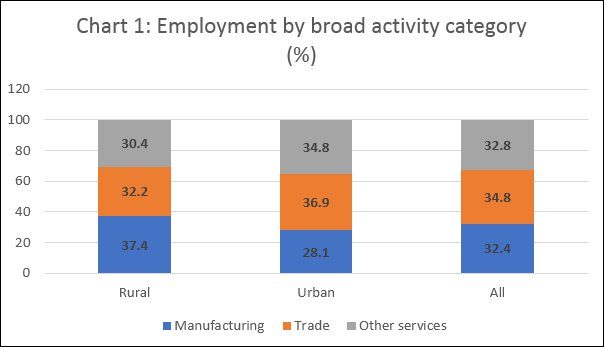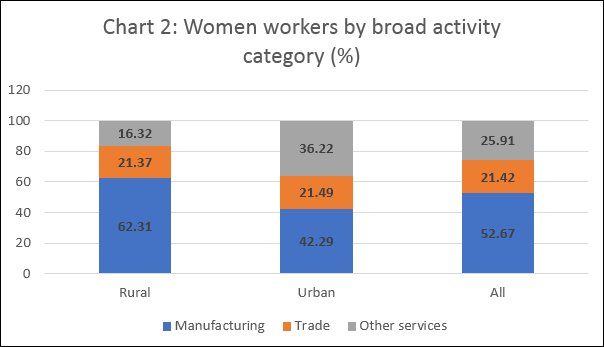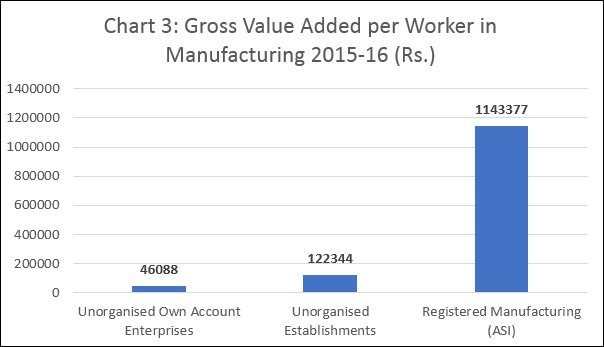
Is “Formalisation” Possible?
In recent times, the clamour for formalising economic activity, or shrinking its unorganised component and expanding the organised, has been heard from diverse sources. There are those who want formalisation to occur because the unorganised sector is seen as being largely outside the direct and indirect tax net, depriving the government of much needed resources. Hence, for example, one feature seen as favouring the Goods and Services Tax regime is that it is likely to force formalisation by requiring transactions to be recorded whenever those transactions are between the organised and unorganised units.
Others see formalisation as the process through which workers realise workplace benefits such as written contracts, legal minimum wages, paid leave and social security. Framing and implementing legislation that ensures workers one or more of these benefits is seen as transforming the nature of the workplace as well. This, however, ignores the fact that a substantial part of the workforce even in the organised sector is “informal”. Yet others see in formalisation a process of transferring workers from low productivity units to higher productivity units. So anything facilitating formalisation also contributes to a rise in average productivity and growth.
Finally, there is a perception that since women obtain the residual jobs in the labour market, they are the ones more likely to be involved in informal work. So formalisation is often seen as particularly favourable for women, improving the conditions of their work and the remuneration received. However, there has been a sharp fall in women’s labour force participation rates, from 42.7 per cent in 2004-05 to 31.2 per cent in 2011-12. In addition, women do not feature predominantly in a sector that accounts for the largest increases in employment in the non-agricultural sector. Construction accounts for a substantial share of non-agricultural employment, with the figure having risen from 14.4 per cent in 1999-00 to 30.1 per cent in 2011-12. There were 51 million construction workers in 2011–12, 93 per cent of whom were in the unorganised sector. However, men constituted 82 per cent of the construction workforce, with women contributing just 11 per cent and children (aged 18 years or less) 7 per cent.
Implicit in all of these perspectives on the unorganised sector is the idea that it is a site for units that reflect an early, backward stage in a process of linear development. In this view, economic development is an inexorable process of formalisation and the aim of policy should be to accelerate that process. However, the evidence increasingly shows that the factors stimulating growth and determining the institutional features of the organised and unorganised sectors are quite separate. The drivers of growth do not necessarily ensure the displacement of the unorganised by the organised. Of course there are strong linkages between the organised and unorganised sectors, which influence the profitability and/or survival of both. But these linkages are not the means through which the organised pulls the unorganised into its own fold. Instead, most often, organised-unorganised sector linkages reproduce and perpetuate the backward unorganised sector.
These features of the dualism characterising economic activity in a country like India are partly reflected in the size and nature of the unorganised sector. A recent survey that provides information on the unorganised sector is the National Sample Survey Organisation’s 73rd Round survey of Unincorporated Non-Agricultural Enterprises (excluding Construction) in India. The survey, relating to 2015-16, covered unorganised enterprises except those in construction as well as units registered under the Factories Act, Beedi and Cigar workers (Conditions of Employment) Act, and the Central Electricity Authority.
Going by the survey, there were 111 million workers (including part time workers) working in unincorporated non-agricultural enterprises excluding construction, or about a quarter of the workforce of 459 million workers employed in that year. This implies that unorganised sector employment in construction even in 2011-12 accounted for more than 40 per cent of workers in the rest of the non-agricultural unorganised sector in 2015-16.

A noteworthy feature is that those employed in the unorganised non-agricultural sector were rather evenly distributed across rural and urban areas with urban workers accounting for 55 per cent of the total. To the extent that it could be argued that units located in semi-urban and rural areas rather than in urban areas would be less advanced and unlikely to be precursors of more productive non-agricultural activities, this distribution suggests that these activities persist and proliferate because of the absence of more ‘decent’ jobs in the organised sector.
Interestingly, as shown in Chart 1, these non-construction jobs in the unorganised sector were more or less equally distributed across manufacturing (32.4 per cent), trade (34.8 per cent) and ‘other services (32.8 per cent). This would imply that there were 36 million workers engaged in unorganised manufacturing in 2015-16, as compared with just 14.2 million employees (of which 11.1 million were workers) in the registered manufacturing sector. If there is one sector in which formalisation possibilities are like to be the highest, it is manufacturing. So the fact that those employed in unorganised manufacturing are two-and-a-half to three times the number engaged in organised manufacturing indicates starkly the limited degree to which the transition to ‘formality’ has occurred.
There are two other features of non-construction, non-agricultural unorganised employment that are striking. One is that the share of female workers was the highest in manufacturing (52.67%) followed by ‘other services’ (25.91%) and trading (21.42%) (Chart 2). To the extent that residual jobs accrue to women because of the gender bias in labour markets, this indicates the kind of manufacturing jobs that are being generated in the unorganised sector. The second is the high share of trade and services in unorganised sector employment outside of manufacturing. The distribution of workers across manufacturing and services is similar in both the organised and unorganised sectors, despite the important role of public administration, defence, the police, and publicly provided educational, health, banking and insurance services in generating organised sector service employment.

The other feature is the specialisation of workers in terms of areas within manufacturing, trade and other services. In unorganised manufacturing, 70.7 per cent of women workers were concentrated in 3 out of 25 sectors. These were: manufacture of tobacco products (2.97 per cent), manufacture of textiles (17.36 per cent), and manufacture of wearing apparel (29.4 per cent). In unorganised trade, 95 per cent of women workers were engaged in the retail trade. And in ‘other services’, more than 70 per cent of women workers were engaged in 3 of 15 sectors, which were food service activities (19.87 per cent), education (40.62 per cent) and human health and social work (10.54 per cent).

‘Formalisation’ is a possibility only in textiles and garments and ‘other services”. But in all of these areas “own account enterprises” engaging the self-employed with low earnings without hired labour overwhelmingly dominate. In manufacturing, for example, the gross value added per worker in 2015-16 was Rs 46,088 in own account enterprises, Rs. 1,22,344 in unorganised establishments with hired labour and Rs. 11,43,377 in the registered factory sector (Chart 3). The low level of self-employed earnings imply that the “margins” associated with these activities are so low that their survival in a formalised setting is in question.
A path of development that directly creates new organised sector employment rather than one which “formalises” and “upgrades” activity and employment in the extant unorganised sector seems to be the need of the moment. In its absence, official attempts at formalisation cannot succeed.
(This article was originally published in the Business Line on October 23, 2018)
